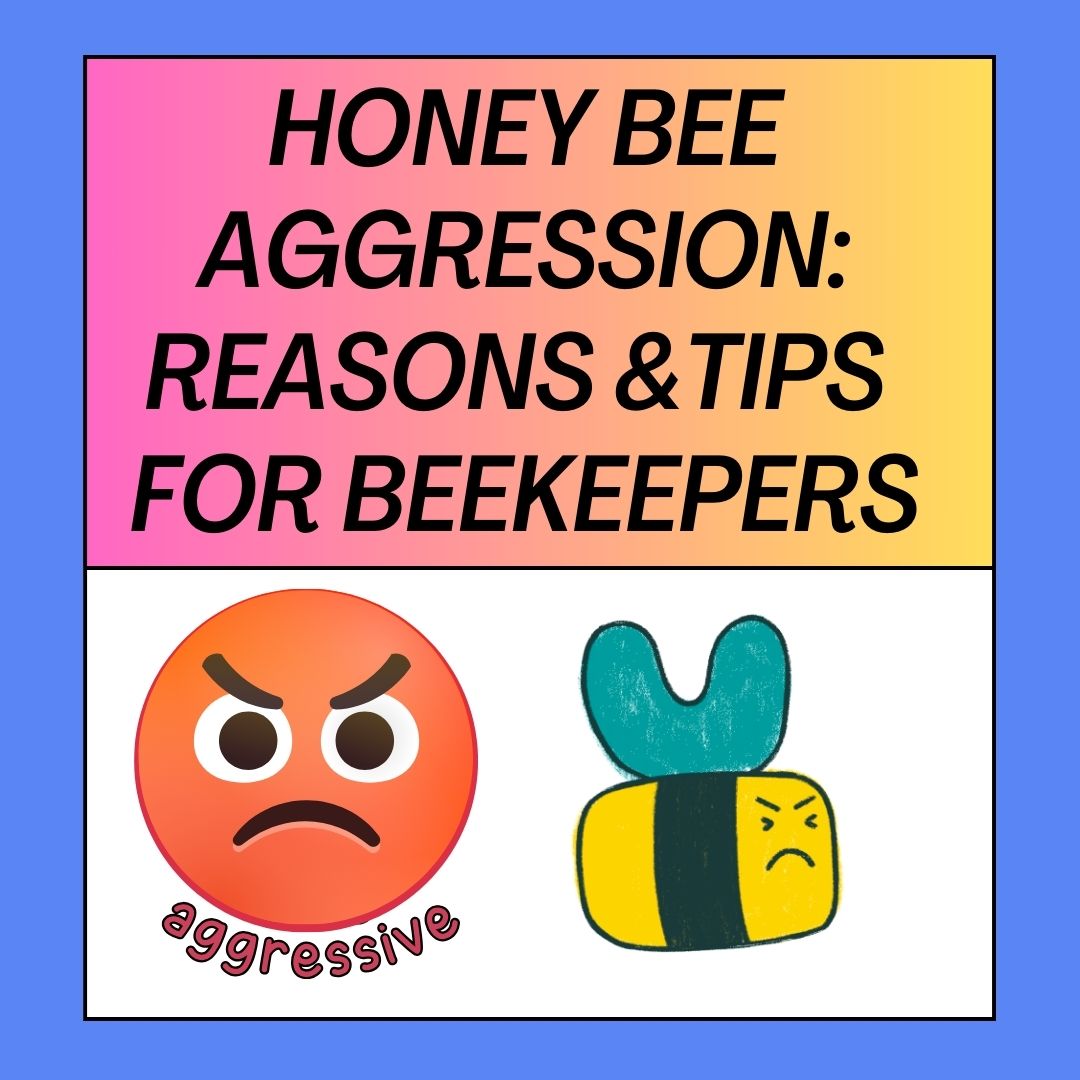
Honey bees are known for their incredible contributions to pollination and honey production. However, honey bees can exhibit aggressive behavior under certain circumstances like any other living organism. Understanding why honey bees become aggressive and how to manage this behavior is crucial for beekeepers and anyone working around these remarkable insects.
This comprehensive guide will delve into the reasons behind honey bee aggression and provide valuable tips for beekeepers to manage and reduce aggression within their colonies.
Why Are Honey Bees Aggressive?
Defense of the Hive: One of the primary reasons honey bees become aggressive is to defend their hive. When bees perceive a threat to their colony, such as a potential predator or intruder, they can become highly defensive. This behavior is essential to hive protection and is often triggered when the hive is disturbed.
Environmental Factors: Environmental conditions play a significant role in honey bee aggression. Bees may become more aggressive during adverse weather conditions, such as heavy rain or strong winds. Additionally, certain environmental stressors, like a lack of nectar and pollen sources, can contribute to increased aggression as bees become more protective of their limited resources.
Genetics: The genetics of a honey bee colony can influence its aggression level. Some bee strains or subspecies may exhibit more aggressive behaviors than others. Beekeepers often select for traits like gentleness when breeding honey bee colonies to reduce aggression.
Robbing Behavior: Robbing behavior occurs when honey bees from one colony attempt to steal honey or resources from another hive. This can lead to aggressive interactions between colonies as bees fiercely defend their resources. Robbing behavior is more common during periods of nectar dearth.
Disease and Parasites: The presence of diseases or parasites within a colony can stress honey bees, making them more irritable and prone to aggression. Beekeepers must monitor their hives for signs of disease and take appropriate measures to prevent and manage these issues.
Signs of Aggression in Honey Bees
Before we explore strategies for managing honey bee aggression, it’s essential to recognize the signs of aggression in a bee colony. Some common indicators include:
- Increased Guard Bee Activity: Guard bees are tasked with defending the hive’s entrance. An increase in their activity, such as frequent buzzing and hovering near the entrance, can be a sign of heightened aggression.
- Stinging: Stinging is a clear sign of aggression. If you notice bees stinging during hive inspections or other interactions, it’s an indication of defensive behavior.
- Chasing Intruders: Bees may aggressively chase intruders, including beekeepers, away from the hive. This behavior is meant to deter potential threats.
- Audible Warning Sounds: Honey bees can produce audible sounds when they feel threatened. These sounds, sometimes described as a high-pitched buzzing or “roaring,” serve as a warning to intruders.
Tips for Managing and Reducing Honey Bee Aggression
Beekeepers can take several proactive measures to manage and reduce honey bee aggression within their colonies:
Wear Protective Gear: When working with bees, always wear appropriate protective gear, including a beekeeping suit, gloves, and a veil. This gear provides essential protection against stings and helps prevent defensive responses from the bees.
Work Calmly and Slowly: Sudden, erratic movements can trigger aggression in honey bees. Approach your hives calmly and move slowly when conducting inspections or hive maintenance.
Choose the Right Time: Be mindful of the time you choose for hive inspections. Honey bees are generally less aggressive during the middle of the day when foragers are out of the hive. Avoid disturbing the colony during adverse weather conditions or at night.
Keep Strong Colonies: Strong, healthy colonies are less likely to become aggressive. Ensure your colonies have an ample supply of food, a healthy queen, and are free from diseases and parasites.
Manage Robbing Behavior: Maintaining good hive management practices to prevent robbing behavior. Reduce hive entrances during times of dearth, avoid spilling honey around the apiary, and consider using entrance reducers to make it more challenging for robber bees to access your hives.
Maintain a Clean Apiary: A clean and organized apiary can help reduce aggression. Remove debris and dead bees from the apiary to prevent scavengers and robber bees from being attracted to your hives.
Regular Inspections: Conduct regular hive inspections to identify and address potential issues before they escalate. Early intervention can prevent aggression from developing.
Conclusion
Understanding the reasons behind honey bee aggression and implementing strategies to manage and reduce it is essential for beekeepers and anyone working with these valuable pollinators. By creating a harmonious beekeeping environment and responding appropriately to colony needs, beekeepers can maintain healthy and productive honey bee colonies while minimizing the risk of stings and aggressive behavior. Beekeeping is a rewarding endeavor, and with the right knowledge and practices, it can be a safer and more enjoyable experience for all involved.
Related FAQs
How Do You Know If A Bee Is Aggressive?
Identifying aggressive behavior in a bee can involve several signs. Look for increased activity of guard bees near the hive entrance, stinging during interactions, audible warning sounds like buzzing or “roaring,” and aggressive chasing of intruders, including beekeepers. These behaviors indicate heightened defensiveness.
How Do You Stop Bees From Being Aggressive?
Reducing bee aggression involves maintaining a calm and careful approach during hive interactions, wearing protective gear, choosing appropriate times for hive inspections, ensuring strong and healthy colonies, managing robbing behavior, and keeping the apiary clean and organized. These practices create a less stressful environment for bees.
What Smell Makes Bees Aggressive?
Several scents can trigger aggression in bees, including the smell of certain chemicals and animal pheromones. However, the most common trigger for aggression is the scent of alarm pheromones released by bees when they perceive a threat. These pheromones signal danger to other colony members, prompting a defensive response.
What Is The Biggest Enemy Of The Honey Bee?
Honey bees face numerous threats, but one of the most significant enemies is the Varroa destructor mite. This parasitic mite attaches to honey bees, feeds on their bodily fluids, and transmits diseases, leading to weakened colonies. Other threats include pesticides, habitat loss, diseases, and climate change.
What Disturbs Bees The Most?
Honey bees are most disturbed by sudden and loud noises, vibrations, strong odors, and rapid, erratic movements near the hive. These disturbances can trigger defensive responses, including stinging and aggressive behavior.
What Do Bees Hate Most?
Bees are highly sensitive to disturbances that threaten their hive’s security. While they may not “hate” specific things, they react defensively to perceived threats. Honey bees particularly dislike loud noises, strong odors, and sudden, disruptive actions in their vicinity.






